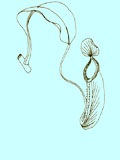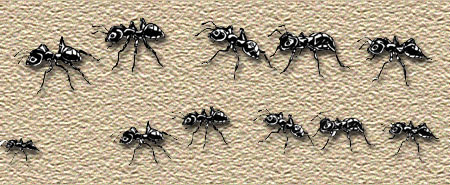

 |
 |
BOOK REVIEWS
Identification Guide to the Aculeata of the Nansei Islands,
Japan
by Seiki Yamane, Shuichi Ikudome &
On current knowledge, the largest phylum of animals
is the Arthropoda, in which the largest class is the Insecta, in which
the second largest order is the Hymenoptera, with some 120,000 species
known and perhaps millions undescribed. About half of the known species
are in the infraorder Aculeata, including the familiar stinging wasps,
ants and bees. The taxonomic scope, then, of this book is ambitious. The
geographic scope is the chain of islands between Taiwan and Japan, from
24° to 31° N, including over
150 islands in the Ryukyus as well as the outlying Senkaku and Daito groups.
They comprise Japan’s tropical frontier, and support almost half of its
aculeate species on less than 1% of its land area.
The book is bilingual, in Japanese and English,
and aims to assist both specialists and general naturalists in identifying
these ecologically important insects. The bulk of it is keys: to super-families,
to families, to genera and to species and descriptions, followed by descriptions
at each taxonomic level. What makes it more approachable than most such
keys is the clear line drawings at each couplet, giving even a newcomer
the best chance of successful identification. Twenty-four colour plates
illustrate a selection of species from 22 of the 26 families: most show
mounted specimens, but many of the ants, and some vespids, megachilids
and others, are shown in life. Preceding the keys are introductory chapters
on phylogeny, morphology and biogeography. The appendices include a spreadsheet
of distribution of the species on the islands, a very useful addition
for those wanting more depth.
I cannot fully evaluate the keys without a trip
to the islands (sadly beyond the Porcupine! expense account), but
those for the ants, the only group with which I can claim a familiarity,
seem exceptionally clear and simple to follow. The higher-level keys will
be useful to students and naturalists far beyond the Nanseis.
From one to half a million years ago and more
recently, Taiwan and the southern and central Ryukyus were joined to the
mainland, whereas the northern Ryukyus, across the Tokara Strait, were
joined to Kyushu. Still, at least in the case of the ants the southern
islands do not contain much of the tropical faunal element that would
occur at the same latitude in Guangdong, while the subtropical elements
tend to occur throughout the chain. More particular differences from the
mainland fauna include a paucity of Pheidole and Polyrhachis
species, balanced by a wealth of Aphaenogaster. Most of the Palaearctic
species,
For interpreting such distribution patterns, inclusion
of the islands’ altitudes in the appendix would have been helpful, as
would brief information on their vegetation. As Skip Lazell would doubtless
point out, species-altitude graphs might have been more illuminating than
the species-area graphs shown. On the identification front, species descriptions
are inevitably brief, and for the ants I would perhaps have included the
measure of alitrunk length as well as total length, which is far more
variable within a species. But overall the inconveniences of the book
– typographical errors, the lack of a subject index to accompany the taxonomic
one, the ‘late entrants’ in the Appendix – are very minor for such a wide-reaching
tome.
On the whole this is a superb book, which sets
the standard for Asia. The authors, particularly Professor Yamane, work
tirelessly to help other would-be specialists in the region to attain
such standards, and this book is just one example of their effort. It
is also an important reference for those of us seeking a better general
understanding of subtropical ecosystems or biodiversity. We haven’t understood
much until we’ve got to know the Hymenoptera.
The book runs to almost 900 pages in all, and
comes hardbound with a strong case. It is available from Mr. Haruo Tamiya,
Hokkaido University Press, Kita-9, Nishi-8, Kita-ku, Sapporo, 060-0809
Japan (up-tamiya@coop.hokudai.ac.jp).
Ordering through Prof. Yamane (sky@sci.kagoshima-u.ac.jp)
may permit a discount rate. The normal price is 26,500 yen (about HK$1960),
the discount rate 21,200 yen – a heavy price, but a heavy book. I shudder
to think what the companion volume for continental China would weigh.
In the authors’ words: “When comparative work of species from this region
and those from Taiwan and continental China is completed, this book should
be completely revised.” However hard we work towards making it redundant
in this way, the Nansei book will have regional importance for many years.
John R. Fellowes

We welcome short notices
about new publications on the natural history of Hong Kong or the region,
but we only have room for one or two book reviews in each issue, so please
ask us before you start writing!
|
Porcupine! |
 Copyright © 2000 |
